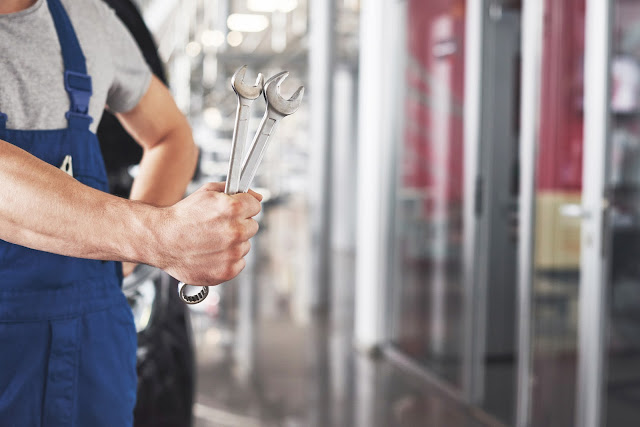The Science Behind Perfect Stone Polishing
Flawless finishes don’t happen by chance -they’re engineered through science, precision, and the right tools. In the world of stone fabrication, polishing is what transforms a raw slab into a refined, show-stopping surface. But behind that mirror-like sheen lies a careful balance of physics, chemistry, and technique.
Let’s explore how the science of stone polishing works -and what makes it succeed or fail.
1. The Science Starts with Surface Preparation
Before polishing begins, the surface must be properly shaped and cleaned. Even microscopic irregularities can interfere with the final finish, so accuracy at this stage is critical.
Using high-performance Cutting Tools & Blades in Dallas, fabricators can create a level surface, remove unwanted material, and eliminate edge inconsistencies. Each cut matters -because a poorly cut edge will never polish evenly.
The science here is simple: smoother inputs lead to smoother outputs.
2. Abrasive Grit: Where Friction Meets Precision
Polishing doesn’t mean just making something shiny -it means gradually reducing surface roughness through the controlled use of abrasives.
Starting with coarser Polishing Pads & Sandpaper in Dallas and working through finer grits, technicians use physics to reduce the surface’s peak-to-valley profile. Each stage removes the microscopic scratches left behind by the previous one, creating a progressive refinement process.
This is where understanding grit size, pad material, and application pressure becomes a technical art. Apply too much pressure, and you risk heat damage. Too little, and the polish won’t take.
3. Chemistry at Work: The Role of Polishing Compounds
After the abrasive stages, polishing compounds -like oxalic acid for marble or tin oxide for granite -are applied to chemically react with the stone surface.
The compound creates a fine slurry that enhances shine by dissolving tiny imperfections and bonding light-reflective minerals to the surface. This step demands precision, especially when working with different stone types, which react differently based on mineral composition.
Professionals often finish the process using a black wax bar, which adds depth and richness to the surface while protecting against future stains.
4. Water Flow and Heat Control: The Invisible Variables
Stone polishing generates intense friction, and without proper cooling, that friction becomes heat -and heat leads to cracks, discoloration, and warping.
Water acts as both a coolant and a lubricant. It clears away debris and maintains the optimal temperature for polishing compounds to work effectively. Too much water, and your compounds dilute. Too little, and your pads overheat.
Managing water flow is part science, part experience -and it’s one of the key differences between novice and master polishers.
5. Tools That Do the Work (and Science Behind Them)
Polishing tools are far from simple. They’re engineered with specific RPM thresholds, vibration control, and pressure distribution systems that affect how evenly material is removed from the surface.
Using professional-grade Coring Tools & Accessories Near You ensures not just smoother finishes but also longer tool life and consistent results across different types of stone.
When tools are matched to the stone type and the polishing stage, friction, torque, and heat are all kept in balance -which is what the science of polishing demands.
6. Material Handling: Where Safety and Science Intersect
Great polishing can’t happen if slabs aren’t safely positioned or held in place. Misalignment during polishing not only affects the finish but also risks tool damage or injury.
That’s why advanced material handling equipment in Dallas -from suction lifters to adjustable A-frames -is essential in any high-end fabrication shop. Proper positioning prevents chatter, vibration, and uneven polish lines.
Handling systems with hydraulic support, leveling features, and stabilization locks ensure your polishers can work efficiently without fighting against stone weight or movement.
7. Environmental Conditions: Often Overlooked, Always Important
Humidity, temperature, and air quality may seem unrelated to polishing, but they play a surprising role in finish quality. For example:
- Excess humidity can affect how quickly polishing compounds dry
- Dust in the air can settle into slurry and create swirl marks
- Low temperatures can reduce chemical reactivity of compounds
Top-tier fabrication shops control their environments to ensure every variable supports a flawless result. The best polishing setup isn’t just about tools -it’s about the space they’re used in.
Final Thought: Precision Is the Product of Process
Perfect stone polishing isn’t magic -it’s material science applied with discipline. From Cutting Tools & Blades in Dallas to the final black wax bar finish, every step has a reason, a method, and a measurable outcome.
At the intersection of artistry and engineering, polishing reveals what stone truly has to offer. But only when done right.
If you’re a fabricator looking to elevate your finishes -or a builder aiming for flawless detail -understanding the science behind each step is the key to excellence.
And with the right tools, setup, and technique, perfection isn’t just possible. It’s repeatable.




Comments
Post a Comment